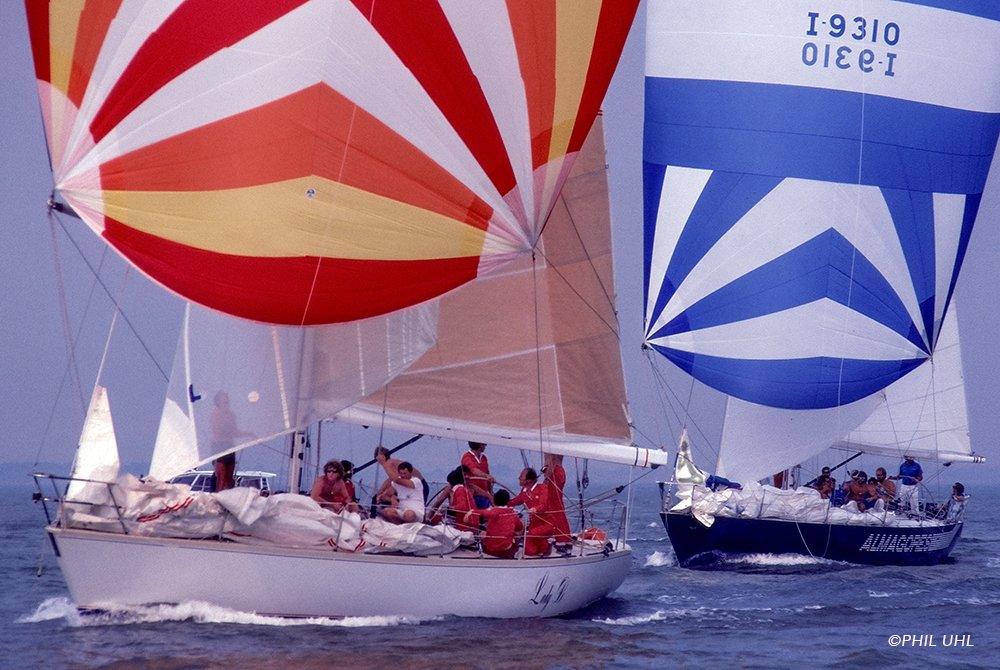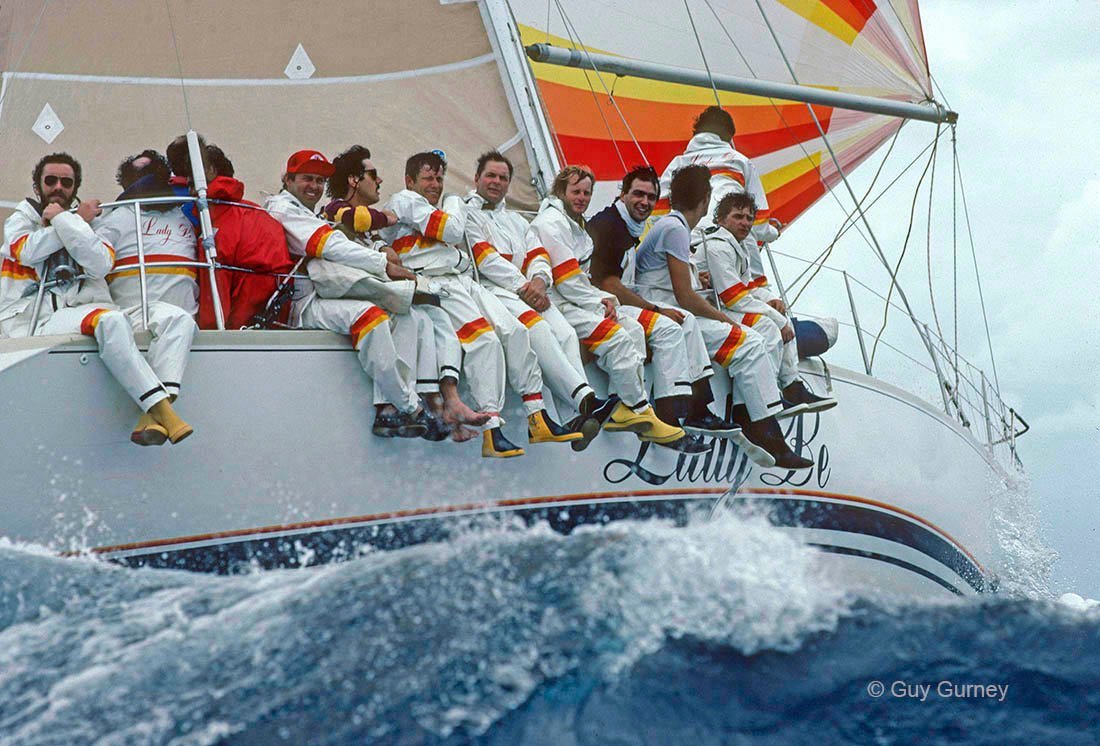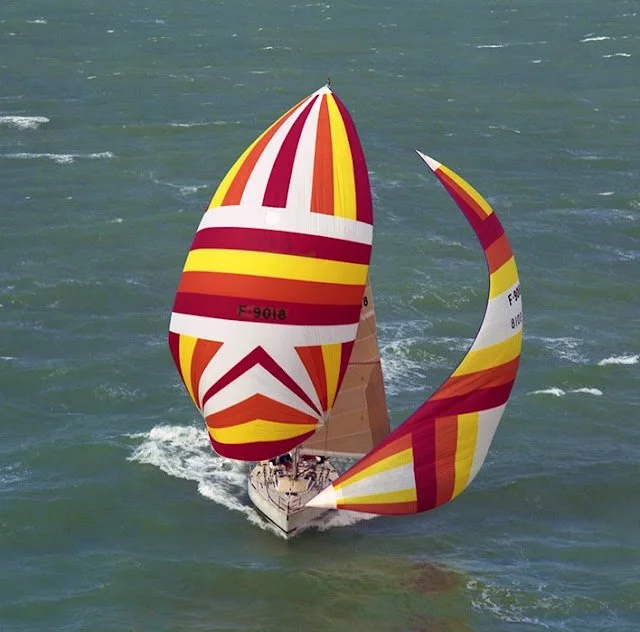Lady Be: A Carbon-Fiber Time Machine with Racing Bloodlines
The Lady Be Project: Part 1
Some boats are floating apartments. Others are weekend escape pods. Lady Be? She’s a time capsule from the golden age of offshore racing, meticulously crafted and still itching to stretch her legs. Designed by Germán Frers, built by Beneteau, and born in an era when innovation meant breaking rules, not just budgets—she’s now my sailing partner, restoration project, and perhaps, occasional tormentor. Welcome aboard.
She’s not just a sailing yacht—she’s a performance contender, a design experiment, and a proud representative of an era that didn’t believe in playing it safe. Meet Lady Be; commissioned by the French Admiral’s Cup team and laid up with materials that were barely out of military labs. This is the opening post in a series dedicated to her past, her future, and all the coffee-stained pages of boatyard notes in between.
Designed by Germán Frers: Elegance with an Edge
Mention Germán Frers in any yacht club and you’ll hear sails flap and gin glasses pause mid-air. With a portfolio that includes everything from Nautor Swan yachts to Volvo Ocean Race machines, Frers boats are revered for being fast, elegant, and intuitively responsive.
Lady Be bears the Frers hallmark: a long, fine entry, racy overhangs, a deep fin keel, and enough sail area to make her exciting in nearly any breeze. Her aesthetics whisper grace; her performance yells "hold on to your hat."
She was commissioned specifically for the French Admiral’s Cup team, who needed a serious contender. Frers delivered a hull that blends grace and aggression—one that sails as if it knows it's being watched.
Built by Beneteau: A Leap into Performance
In the early 1980s, Beneteau was best known for building solid, practical cruisers. Think: floating Renaults. But when asked to build a boat for elite offshore competition, they reached for the stars—and the space-age materials.
Lady Be was laid up in carbon fiber, Kevlar, and epoxy resin—materials usually reserved for fighter jets and experimental aircraft. Her build was essentially a lab coat in hull form: carbon for rigidity, Kevlar for impact resistance, and epoxy for strength and durability.
This wasn’t a production model. It was a prototype with racing DNA and grand prix attitude. Only later did Beneteau adapt the hull for the First 456 series, building around 200 fiberglass versions. But Lady Be remains the black sheep—lighter, faster, and considerably more defiant.
Carbon, Kevlar, Epoxy: The Holy Trinity of Modern Race Boats
In 1983, using these materials in a yacht was like putting a jet engine in a Volkswagen Beetle. You could do it—but it raised eyebrows.
Carbon fiber: Rigid, ultra-light, and unforgiving. Adds stiffness without bulk.
Kevlar: Resistant to impact and abrasion. Think bulletproof vests for hulls.
Epoxy: Superior adhesion and water resistance. The glue holding the madness together.
Lady Be was among the first to combine all three. Today, this combo is the industry standard. Back then? It was madness. Glorious, winning madness.
The Admiral’s Cup and the RORC/SORC Offshore Racing Scene
To understand Lady Be’s purpose, you have to know her playground. The Admiral’s Cup was the Formula 1 of offshore racing. National teams of three yachts each would duke it out in a combination of inshore and offshore races.
She was also built to comply with RORC (Royal Ocean Racing Club) and SORC (Southern Ocean Racing Conference) rules—two of the harshest rating systems on the planet. These boats weren’t just fast; they had to survive brutal conditions and still look good doing it.
To qualify for such events meant you weren’t just fast; you were flawless. Lady Be was built with that goal, a perfect cocktail of speed, durability, and swagger.
Peter Blake: The Legend and the Legacy
After her French trials, Lady Be was picked up by Sir Peter Blake, a legend of ocean racing. If you’ve ever furled a headsail while muttering "what would Blake do?", you’ll understand what that means.
Chartered for the New Zealand team in the Admiral’s Cup, Lady Be delivered gutsy performances under Blake’s leadership. It was a pairing of pedigree and intuition—the kind of match you read about in yachting lore.
Blake’s brief but significant time with Lady Be cemented her reputation as more than just fast. She was formidable.
A Racing Pedigree Etched in Spray
Lady Be wasn’t built to sit pretty in a marina. She was campaigned hard in the early 80s, including:
1983 Admiral’s Cup:
Chartered by Peter Blake for the New Zealand team
Raced to a 4th in Race 2 and helped NZ secure 6th overall
1984 SORC:
Sailed by François Chalain
Finished 3rd in Class C and 14th overall with top-3 finishes in several legs
She was a consistent performer and a crowd favorite. Her acceleration and balance under sail turned heads and trimmed seconds off race legs. Even now, her helm whispers, "let's dance."
The Refit: Wrenches, Wisdom, and the Occasional Tantrum
Today, Lady Be is beginning her next chapter—a comprehensive refit that respects her past and readies her for new adventures. From updating her electronics (read: removing wires that may predate the Berlin Wall) to integrating renewable energy and refining her interior, it’s a labor of love.
This series will follow that journey. You’ll see what it takes to breathe new life into a legacy yacht—and maybe pick up a few tips for your own refit dreams.
Why This Series, Why Now?
Because boats like Lady Be are rare. Not just because of their materials or history, but because they carry stories. About innovation. About design. About the human desire to go fast and far.
Join me as we explore her story in full—from the loft drawings of Frers’ Buenos Aires office to the greasy reality of a bilge pump swap. Let’s find out what it means to own, restore, and sail a boat that once redefined what a yacht could be.
Welcome aboard.



